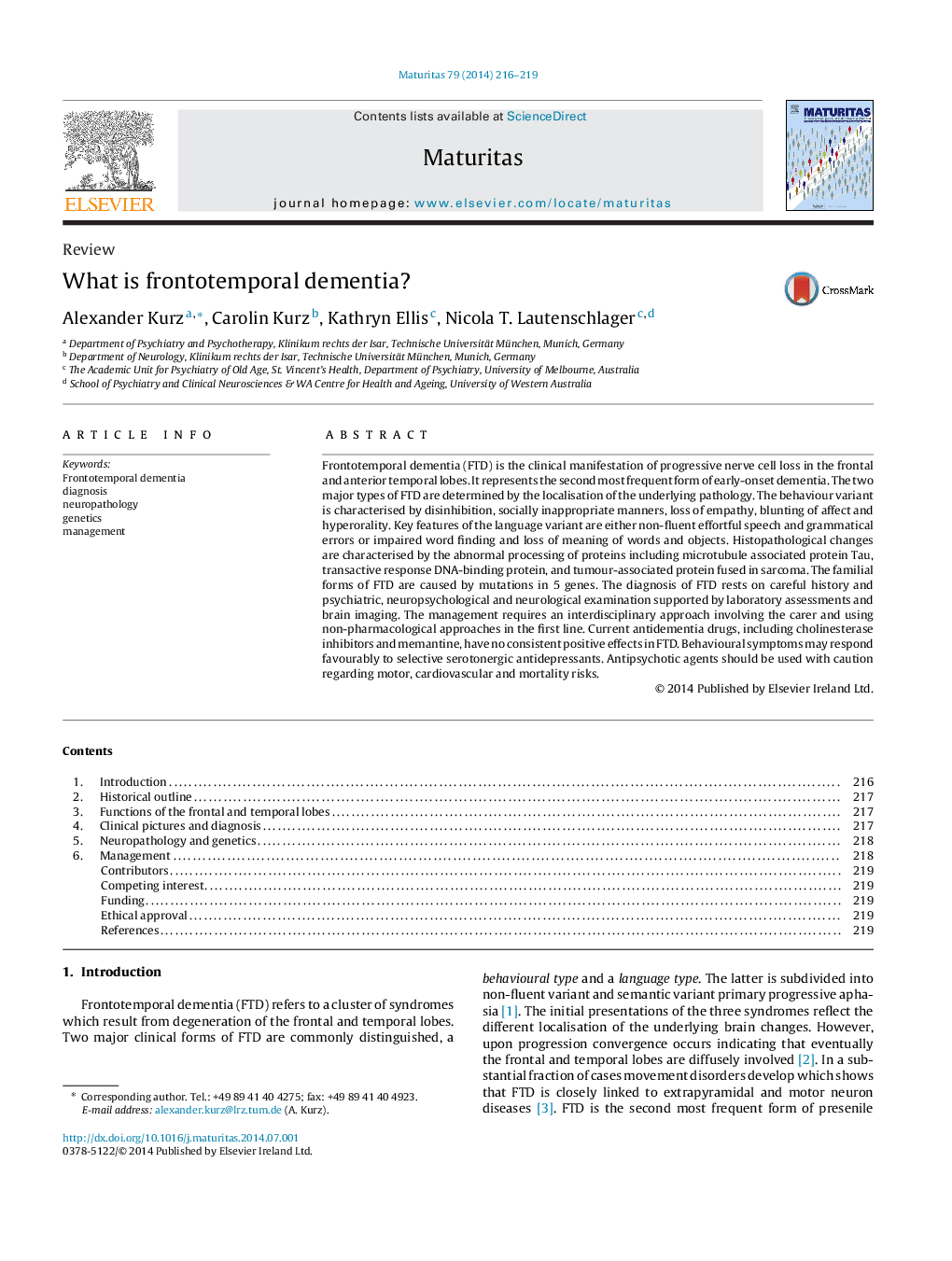| کد مقاله | کد نشریه | سال انتشار | مقاله انگلیسی | نسخه تمام متن |
|---|---|---|---|---|
| 1917210 | 1047883 | 2014 | 4 صفحه PDF | دانلود رایگان |
Frontotemporal dementia (FTD) is the clinical manifestation of progressive nerve cell loss in the frontal and anterior temporal lobes. It represents the second most frequent form of early-onset dementia. The two major types of FTD are determined by the localisation of the underlying pathology. The behaviour variant is characterised by disinhibition, socially inappropriate manners, loss of empathy, blunting of affect and hyperorality. Key features of the language variant are either non-fluent effortful speech and grammatical errors or impaired word finding and loss of meaning of words and objects. Histopathological changes are characterised by the abnormal processing of proteins including microtubule associated protein Tau, transactive response DNA-binding protein, and tumour-associated protein fused in sarcoma. The familial forms of FTD are caused by mutations in 5 genes. The diagnosis of FTD rests on careful history and psychiatric, neuropsychological and neurological examination supported by laboratory assessments and brain imaging. The management requires an interdisciplinary approach involving the carer and using non-pharmacological approaches in the first line. Current antidementia drugs, including cholinesterase inhibitors and memantine, have no consistent positive effects in FTD. Behavioural symptoms may respond favourably to selective serotonergic antidepressants. Antipsychotic agents should be used with caution regarding motor, cardiovascular and mortality risks.
Journal: Maturitas - Volume 79, Issue 2, October 2014, Pages 216–219
